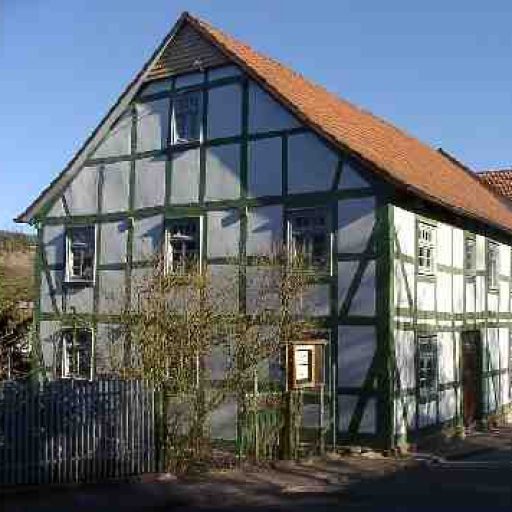Selig Salomo (or Salomon) Rothschild is the oldest son, and presumed oldest child, of Salomon Abraham Rothschild. I say “presumed” because we know Salomon Abraham Rothschild had at least 6 children, two of which were sons. All other known children are younger than Selig. Selig was born about 1770 in Vöhl. The information for Selig Salomo Rothschild comes from www.synagoge-voehl.de.
Selig married Ranchen Regine Rubino probably around 1796. Ranchen was born about 1776, and we don’t have any other information about her at this time. Their oldest daughter, Betti Belchen Rothschild was born sometime in 1797 in Vöhl. Son Isaak Rothschild was born in Vöhl in 1799. His records have often been combined with those of his cousin, Isaac Rothschild (born 1820), and you’ll learn more about that in Isaak’s blog post. Other children born to Selig and Ranchen were Mathilde (1801), Minna (1803), Ruben (1805) and Abraham (1808).
Selig’s profession was “Geldheber”, or money handler, like is father. It’s quite possible he took over the family business, or at least part of it. Sadly, it doesn’t sound like he was very good at managing money, because on 19 October 1831 he appeared before the court in Vöhl regarding a debt. Associate Judge Koch ruled against him on seizure for 65 thaler of debt that he owed to a man named Wittmer, possibly from Mahlberg or Marburg. In 1833, he owed a sum of 375 fg (not sure of the denomination) to Sim (probably Simon) Kugelmann, who filed a complaint against Selig. Associate Judge Koch ordered seizures and an auction. The following items were seized: a cow, a bureau, a “Kannbeh”, a “Komote”, and “Swey Dische”, all from the living room. Unfortunately, I have not been able to find any suitable translations for the three items in quotation marks. I suspect “Komote” is actually “Komode”, which is a chest of drawers which was quite decorative and popular in the 18th century. “Swey Dische” to me sounds like “zwei Dische” or “two dishes”. Perhaps decorative platters?
Despite his personal financial difficulties, Selig was the treasurer for the Jewish Community Board. In 1824, he is mentioned in a letter from the district administrator, in which the latter asks representatives from Altenlotheim, Höringhause, Eimelrod, and Vöhl to meet with Selig Rothschild to elect deputies. This implies he had a leadership position in the local Jewish community.
In 1827, in his capacity as a board member of the Jewish Community, he has to deal with “the refusal of the Basdorfer” to contribute to the cost of the recently completed Jewish school. Selig’s brother, Ascher, also a money handler, heavily financed the building of the Jewish school in Vöhl, with the understanding that it would be for the benefit of the Jewish community as a whole, which encompassed the surrounding villages, such as Asel and Basdorf. All members of the Jewish community agreed to contribute to the cost, thereby repaying Ascher. Once the school was complete, one of the Jews from Basdorf tried to renege, and Selig had the task of dealing with him.
In 1829, the Jewish schoolhouse was dedicated as a Synagogue. In 1834, Selig is still a member of the Jewish Community Board, and is signed on a letter of payment of the stalls in the synagogue. It is believes this refers to the seats, and that each Jewish family was assigned a seat. Ascher Rothschild, for example, had Seat #1 in the sanctuary. In the women’s balcony, you can still see where the seat numbers were painted on the support beam.
According to the “Directory of the Salt Requirement of the Mayor Vöhl — Municipality Vöhl After measure of the Number of Souls and the Livestock of the Year 1840” the following belong to the household of Selig Salomon Rothschild: 4 persons over 8 years old; 0 persons under 8 years old; 0 horses; 2 oxen, cows, and cattle; 9 sheep, goats, and pigs.
There is no mention of Selig after the 1840 salt tax, so it’s presumed he died sometime that year. At the time of his death, he was survived by his wife, all 6 children and 5 grandchildren. An additional 11 grandchildren born after 1840, three of whom were named Selig.
His wife, Ranchen, survived him by nearly 20 years, passing away in Vöhl on 30 January 1860. On 1 February 1860, the following notice was submitted to the City Registrar’s office in Vöhl:
That according to the alleged statement, Regine Rothschild, 84 years old, suffered from arthritis. In Vöhl on 30 January 1860 at 8 o’clock, after several weeks of illness, life has stopped, and that during today’s inspection and investigation of the corpse, the following characteristics of death have been noticed:
- Coldness and rigidity of the whole body
- Peculiar corpse smell.
- Turbidity of the cornea and immobility of the pupils.
Blue-green coloring of the abdominal wall and other signs of internal…, so that she is to be regarded as dead, this attests to duties. Vöhl, d. 1st of February 1860, Sulzmann.
The next post will be about Selig’s sister Märle Rothschild and her husband David Isaac Stern.


I am interested in knowing how you found these documents—they are amazing in giving so much detail about Selig! I wonder how he ended up owing those two men so much money.
LikeLike
Hey, Amy, great questions! No idea why he owed them so much money, or why someone with his obvious financial skills ended up having so much debt! As for the information regarding Selig Salomo Rothschild, it came from http://www.synagoge-voehl.de. For more information about that website, check out my “About the Blog” section.
LikeLike